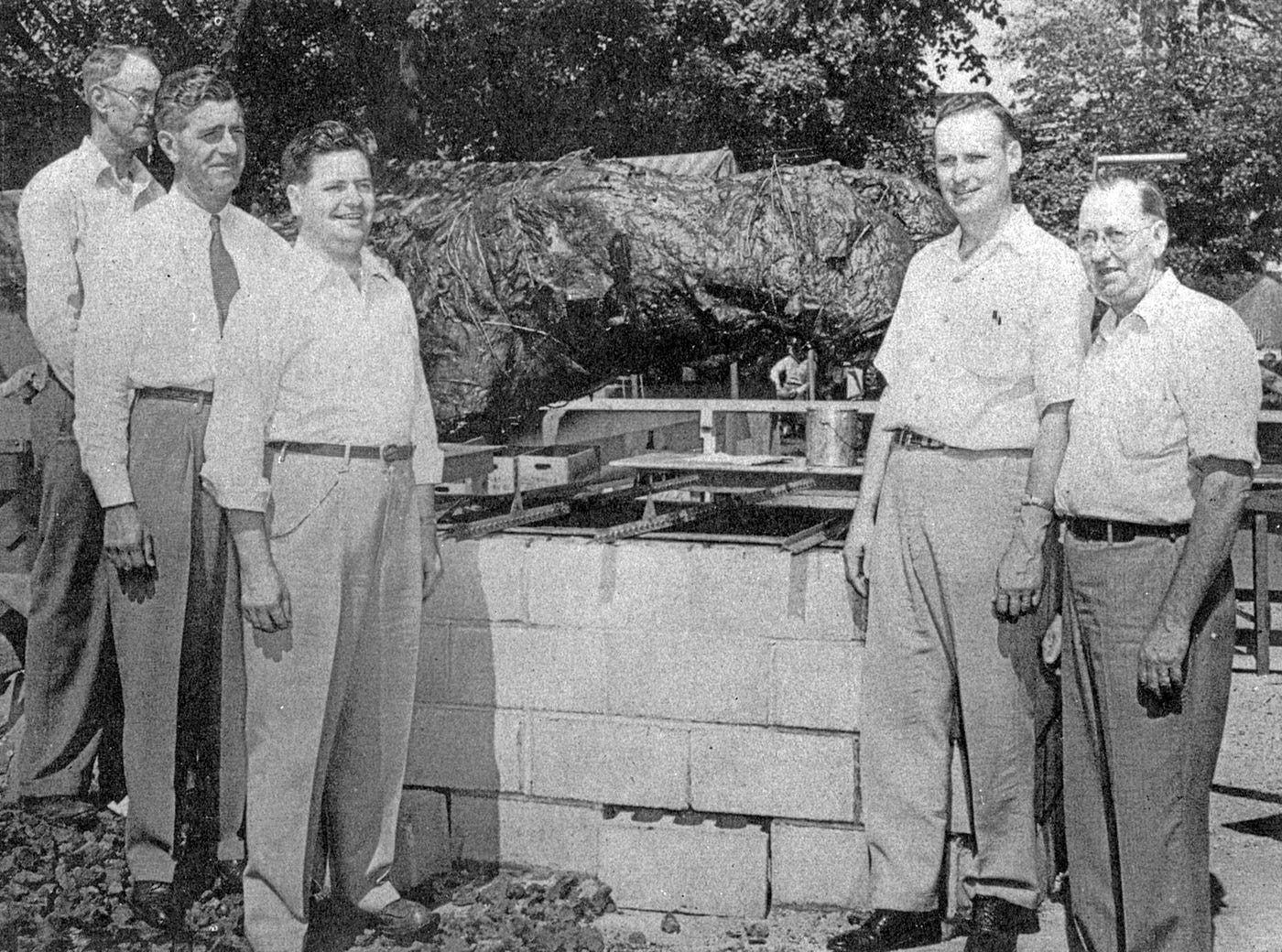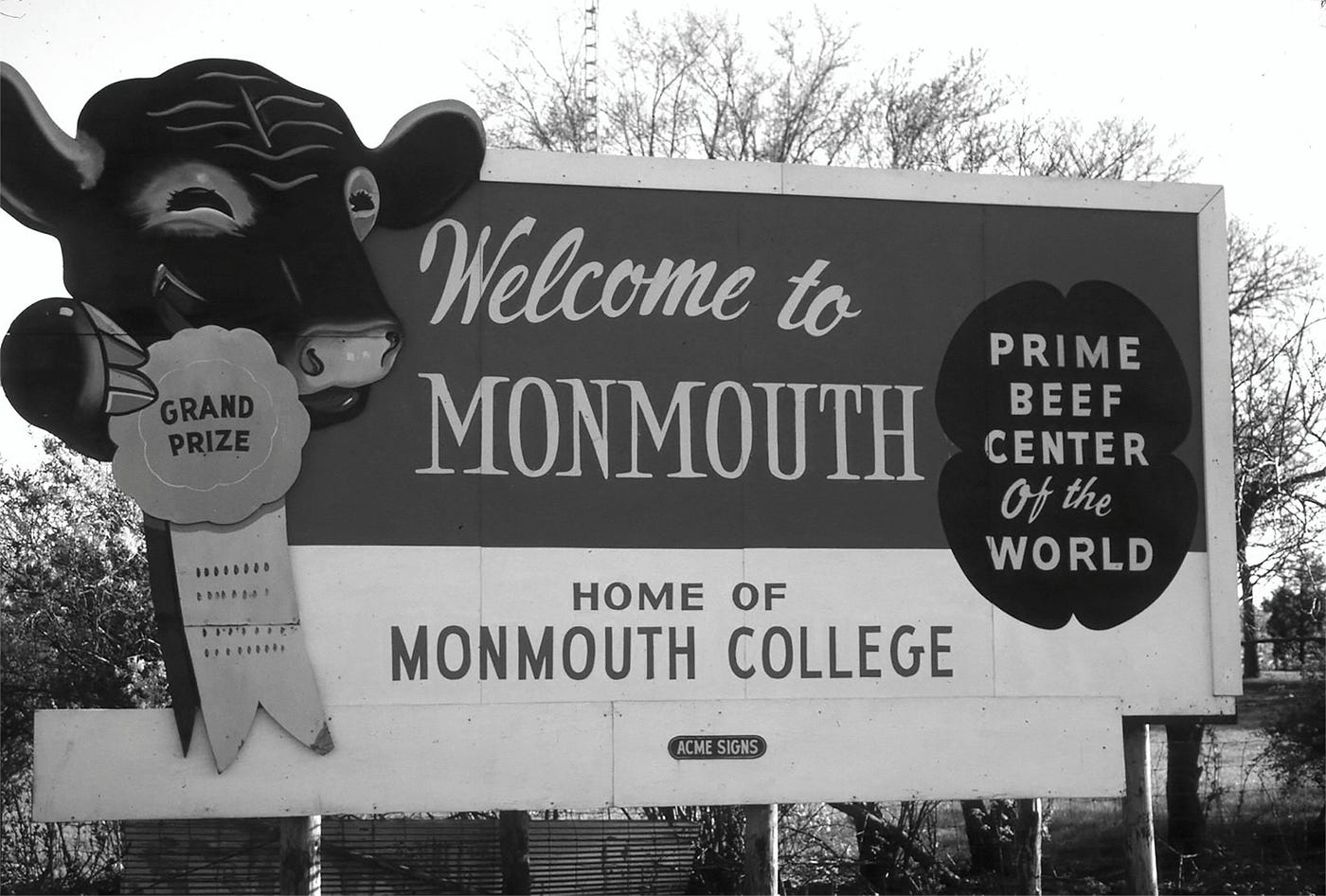Prime Beef Festival Parade Monmouth Il

Festival pays homage to days when Illinois prime beef was king
MONMOUTH, Ill. — Most lifelong Warren County residents do not recall a Labor Day week that did not include the Prime Beef Festival. That's because 2018 marks the 70th anniversary of the local institution. While prime beef is no longer the primary focus of the four-day event, the festival's name celebrates an era when cattle raising was a staple of local agriculture, and Monmouth proudly proclaimed itself the "Prime Beef Center of the World."
The story of the founding of the Prime Beef Festival by the Chamber of Commerce in 1948 sheds a fascinating light on the socioeconomic history of Western Illinois in the years following World War II.
As Monmouth's postwar economy began to emerge, it became apparent to the Chamber of Commerce that hiring a full-time vice president was essential. The Chamber board found the perfect candidate in a Roseville native who, following his discharge from the Army, had worked as district sales manager National Livestock Supplies in Bloomington. Thirty-year-old Bob Albert brought with him an air of unbridled enthusiasm when he assumed the position in 1947. "Like many salesmen," he said, "I felt I could sell most anything saleable." And sell he did.

One of Albert's first objectives was to put Monmouth on the map. The previous summer, The Drover's Journal had reported that 23 head of cattle from the Pattee farm near Cameron had set an all-time weight record at Chicago's Union Stockyards, averaging 1,343 pounds apiece. Monmouth-area cattlemen had been steadily increasing their production in recent years — from 34,000 in 1940 to 43,000 in 1945 — and Albert thought this could be exploited. He called the Union Stockyards and confirmed that in 1948 Warren County had sent more beef to Chicago for processing than had any other farming region. The slogan "Prime Beef Center of the World" was soon adopted.
What better way to publicize the title than with a festival? An annual fall festival on the Public Square had been successfully revived two years before by the Chamber to welcome home World War II veterans, so Albert dubbed the 1948 version the first annual Prime Beef Festival. Its central attraction would be three prime beef steers barbecued over open pits on the square. For three days, two-man teams worked eight-hour shifts supervising each steer. One hundred and twenty-two gallons of barbecue sauce were used. Walter Phelan, manager of the Elks Club, arranged for chefs from some of Chicago's top steakhouses to help with the preparation.
By Saturday afternoon, the beef was ready. An estimated 25,000 festivalgoers lined up for a free beef sandwich. Although some technical problems prevented everyone from being served, the festival was an unqualified success. Soon, "Prime Beef Center" was appearing everywhere — on brochures, in newspaper and magazine articles, even the popular banquet hall in the Colonial Hotel was renamed the Prime Beef Room. In 1961, large billboards featuring a smiling steer were placed at the entrance to the city, and in 1962, pictures of an Angus and a Hereford steer replaced the traditional gold star on the doors of Monmouth police cars.
Beginning in 1953, the festival was moved from the Public Square to Monmouth Park, due to federal traffic regulations (the square was formerly the intersection of U.S. Routes 67 and 34). The festival parade in those days did not stop at Eleventh Street, but continued all the way to the park fairgrounds.
Today, with the livestock judging moved to Roseville, fairgoers tend to focus on such popular events as the princess pageant, parade, demo derby and car show — forgetting the central role that beef played in early festivals.
Looking back to 1953, Gov. William Stratton was the guest of honor, invited by Congressman Robert McLoskey of Monmouth, who also served as that year's festival president. After riding in a surrey in the parade, Stratton enjoyed a prime beef sandwich at the Warren County Home Bureau tent, then spoke before an estimated crowd of 20,000, saying that Warren County had reached greater heights in feeding and raising great beef cattle than any place in the world.
That night in the livestock tents, which stood near the current tennis courts, the grand champion of the Fat Steer Show was selected by three expert judges from Chicago. The judges had a tough time deciding the winner — a 1,210-pound Black Angus — as the competition featured, according to the Galesburg Register-Mail, "33 of the finest fat steers to be seen anywhere on the globe." The championship trophy was presented by Richard Orr, farm editor of the Chicago Tribune, who covered the festival for the paper.
On the final day of the festival, 37 children — mostly 4-H and FHA members — drew for turns to purchase calves at the Baby Beef Show to feed for the following year's festival.
It's been nearly 50 years since the Chamber actively promoted Monmouth as the Prime Beef Center of the World, but the festival proudly bearing that name continues to persevere, through fundraising, volunteer labor and adding fresh events — including several this year.
What brought about the decline of Warren County as a prime beef capital? The closing of the Union Stockyards in 1971 was not the cause, but a symptom of gradual decline that saw cattle production move steadily westward. The growth of interstate trucking made it cheaper to slaughter cattle where they were raised and allowed breeders to sell directly to packers, eventually rendering the Chicago yards obsolete.
While local farmers from the prime beef era purchased much of their feeder stock from the western ranges and fattened them on Warren County corn and hay, the return costs of raising corn and soybeans on their land gradually became lower than that of raising steers. In 1950, a census of cattle and calves in Warren County boasted 45,300 head. The May 2018 census totaled just 5,900 head of cattle in the county. Much of the 75,000 acres of rich pasture that graced Warren County 70 years ago has since been converted to cropland.
Overall, cattle production in Illinois is a shadow of its former self. In 1950, there were 2.9 million cattle in the Prairie State. Today, that figure has dropped to 397,000. Western Illinois still produces a large percentage of that beef, but today Warren County stands 17th in production among all Illinois counties.
Today, prime beef has become a commodity that is increasingly out of reach for the average consumer. Because less than 3 percent of all beef is graded as prime, it is often available only at fine restaurants, warehouse clubs or mail order. A 20-oz. prime porterhouse steak can cost $60-$80 from an online supplier. Increasingly, the market for prime beef (produced primarily in Texas, Nebraska and Kansas) is overseas — with Japan being the leading customer.
Jeff Rankin is an editor and historian for Monmouth College. He has been researching, writing and speaking on western Illinois history for more than 35 years.
bergmannhincir1988.blogspot.com
Source: https://jeffrankin.medium.com/festival-pays-homage-to-days-when-beef-was-king-1d11947e022
0 Response to "Prime Beef Festival Parade Monmouth Il"
Post a Comment